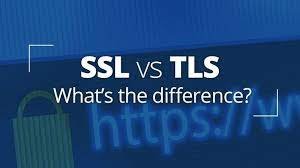
In today’s connected world, network monitoring is an essential part of maintaining the performance, security, and stability of a computer network. Network monitoring is the process of continuously collecting and analyzing data on network traffic to identify potential issues and threats.
In this blog, we will explore how network monitoring works, the different tools and techniques used for network monitoring, and the benefits of network monitoring for businesses.
What is Network Monitoring?
Network monitoring involves tracking the traffic and performance of all network components, including switches, routers, servers, and workstations. The main goal of network monitoring is to keep the network running at optimal levels by identifying and resolving potential issues before they become major problems.
How Does Network Monitoring Work?
Network monitoring works by continuously collecting and analyzing data on network traffic. Network administrators can use this data to identify network performance issues, security threats, and potential bandwidth issues. Network monitoring can be performed using a variety of techniques, including packet capture, flow analysis, and log analysis.
Packet capture involves capturing and analyzing individual network packets to identify network traffic and potential security threats. Flow analysis involves analyzing network flow data to identify patterns and trends in network traffic. Log analysis involves analyzing log data generated by network devices to identify potential issues or threats.
Tools and Techniques for Network Monitoring
Network monitoring tools can be either hardware or software-based. Hardware-based tools include network probes and switches, which capture and analyze network traffic. Software-based tools include network analyzers, intrusion detection systems (IDS), and security information and event management (SIEM) systems.
Network analyzers are software tools that capture and analyze network traffic in real-time. IDS systems monitor network traffic for known security threats and send alerts to network administrators when threats are detected. SIEM systems are used to analyze security event logs from multiple sources to identify security events that may indicate potential security threats.
Benefits of Network Monitoring for Businesses
Network monitoring can provide several benefits for businesses, including:
- Improved network performance: Network monitoring can identify performance issues that can be addressed before they become major problems, improving network uptime and reducing the risk of network downtime.
- Increased network security: Network monitoring can identify potential security threats, allowing network administrators to take steps to mitigate or prevent these threats.
- Better visibility into network traffic: Network monitoring can provide network administrators with a clear picture of network traffic, helping them identify trends and patterns that can inform network planning and design.
- Improved regulatory compliance: Many regulatory frameworks require businesses to implement network monitoring to ensure the security and integrity of their networks.
Challenges of Network Monitoring
Network monitoring can be a complex and challenging task. Some of the challenges include:
- Network complexity: Modern networks can be incredibly complex, with multiple components and layers of infrastructure. Network monitoring tools need to be able to capture and analyze data from all of these components to be effective.
- High volumes of data: Networks generate massive volumes of data, making it challenging to capture and analyze all of the data effectively. Network monitoring tools need to be able to scale to handle this volume of data.
- Threat intelligence: As security threats become increasingly sophisticated, network monitoring tools need to be able to keep up with the evolving threat landscape.
Types of Network Monitoring
There are several types of network monitoring techniques that can be used to keep an eye on the network activity. Here are some of the most common types of network monitoring:
- Packet Capture: This technique is used to capture the network traffic in a network segment. A packet capture tool can help you capture packets and analyze them to identify any issues or threats.
- Flow Analysis: This technique involves analyzing the flow of data between network devices to identify the root cause of any network issues.
- SNMP Monitoring: Simple Network Management Protocol (SNMP) is a protocol used to manage and monitor network devices. SNMP monitoring tools can be used to monitor network devices and their performance.
- NetFlow Analysis: NetFlow is a protocol used to collect information about the network traffic. NetFlow analysis tools can help you monitor the network traffic and identify any issues.
Best Practices for Network Monitoring
Here are some best practices for network monitoring:
- Define your network monitoring goals: Determine what you want to monitor and why you are monitoring it.
- Choose the right monitoring tools: Select the tools that are best suited for your network and its requirements.
- Monitor regularly: Regularly monitor your network to stay on top of any issues or threats.
- Analyze your data: Analyze your monitoring data to identify trends and potential issues.
- Create alerts: Set up alerts to notify you when specific events occur on the network.
- Keep your monitoring tools up to date: Keep your monitoring tools up to date with the latest software updates and security patches.
Conclusion
Network monitoring is an essential component of network security. By monitoring your network, you can detect issues and threats early on, improve performance, and optimize capacity planning. There are several network monitoring techniques and tools available, and it’s important to choose the ones that are best suited for your network. By following best practices for network monitoring, you can ensure that your network is secure and performing at its best.



















